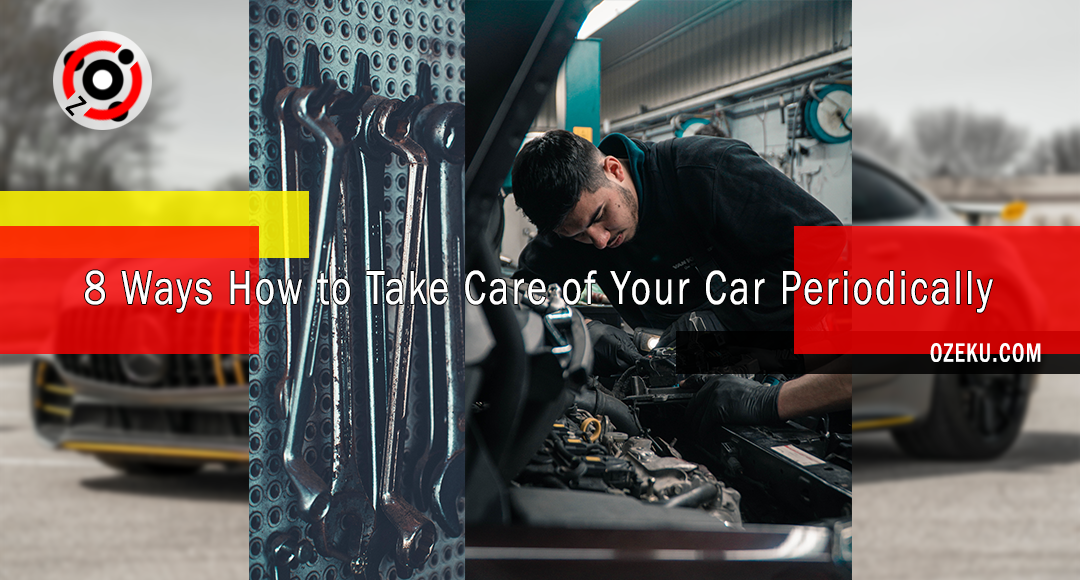How to Take Care of Your New Car
Owning a car is one of the biggest dreams of many people. If you already have your first car, see how to care for a car so that it lasts, stays in good shape for a long time, and has the best selling value.
Owning a car is an asset that is on many people’s dream list. To reach various places safely and comfortably, private vehicles are still the best choice. If you already have your first car, you really don’t only have to be able to use it, but also take care of it.
After all, cars are durable goods, aka objects that have benefits over a long period of time. In order for it to remain optimal for a long time, the car needs top condition. Like humans, cars also need to be cared for to stay healthy.
You will also enjoy the benefits of taking care of your car when you want to sell it later. Because, you can only get the best price if the car you offer is in prime condition.

How to maintain and Take Care a car
How? Agree that you need to maintain the condition of the car? If so, let’s take a look at some of the basic maintenance steps you need to take to keep your car in good condition.
1. Use suitable fuel
As a car owner, of course you are aware that there are various types of fuel available today. At a time when world oil prices are high, like now, the difference between the cheapest fuel and the most expensive is quite a lot.
If you want your car’s engine to last, you shouldn’t buy fuel based on economic considerations alone. Do not just save, to buy the cheapest. All you have to do is buy the fuel that matches what your car’s engine needs.
Many cars today use engines that demand the use of fuel with a certain octane rating. Like, turbo-engined cars that demand fuel with an octane rating of 92.
If you are not blind about mechanics, check the manual that you got when you bought the car. There must be fuel specifications required by your car engine.
2. Change the oil regularly
The oil and its filter components must be replaced periodically to maintain engine durability. Just so you know, oil has many functions for car engines. Not only reduces friction between engine components, oil also cools the engine. Lubricants also clean dirt, and prevent rust from invading car engines.
In line with the operation of the car engine, oil will be used. Exposure to air and heat will wear down the oil’s life more quickly. The oil should also be changed because this fluid is exposed to dirt and rust.
All cars today are equipped with an indicator that shows the condition of the engine oil. If the oil is no longer usable, there is an indicator light that lights up on the dashboard of the car. But keep in mind, if the indicator lights up, it means the oil in your car is no longer suitable for use. And, it can pose a risk of engine damage.
All you have to do is change the oil and filter before the indicator lights up. When is it? For a new car, it’s easy. All you have to do is follow the recommendations for changing the oil in the manual.
Car manufacturers will recommend changing the oil based on two references, namely the distance traveled or the time the machine is used. For example, it is recommended to replace the oil when the odometer shows 10,000 km, or a year of use. So, you should change your oil if one of those recommendations is reached.
Anyway, for newer cars, oil is not only needed for the main engine and brakes. But also in certain parts, such as the power steering. You should also carry out regular oil changes for these special parts.
3. Check and replace the battery regularly
For cars with fuel engines, the battery is a source of electricity. It is this battery that starts the fire to then be burned by gasoline. This compressed combustion results, which will produce power to move the car.
Another important role of the battery is to store electricity used by various electrical components in the car. Take for example the lights in the interior, the audio system to the electrical devices to automatically close and open doors and windows.
Like batteries, batteries have a limited lifespan. Its ability to store electricity will decrease over time. Usually, a car battery should be replaced after two or three years of use.
Also Read : 20 Tips for Buying a New Car for Beginners
4. Check the feasibility of tires
As part of the car that directly touches the road, tires are an important component. Tires play a role in ensuring the car moves and maneuvers stably. If the condition of the tires is not okay, the car’s motion can get out of control.
Tire conditions that can cause hazards such as inappropriate air pressure. Either excessive wind pressure, or less. Incorrect air pressure will cause the tires to lose traction. Tires can also be torn because of inappropriate pressure.
Most of today’s cars have an air pressure indicator on the tires. If your car is equipped with an indicator like this, all you have to do is monitor it every time you drive.
If your car doesn’t have an air pressure indicator, do a visual check. Tires that are underinflated will be easier to see. To ensure that the tire pressure is not excessive, you can use a gauge.
Tire pressure usually decreases, or may increase, over the course of a week. So, it’s a good idea to check the tire pressure once a week, or at most a month.
The eligibility of tires is also determined by the thickness or tread pattern on the surface. If it’s worn out, or there’s no more tread development, the tire’s grip is very low. This type of tire is no longer suitable for use and must be replaced.
Typically, tire treads wear out within two to three years. How fast it will depend on the life of the car, as well as the road conditions it travels frequently.
5. Check the brakes regularly
The function of the brakes in a car certainly doesn’t need to be explained again. Without brakes, it is impossible to drive the car safely. To ensure that your car’s brakes are used all the time, don’t forget to check them periodically.
For new cars, brake inspection will be carried out according to the routine service schedule set by the car manufacturer. When checking the brakes, the repair shop will usually replace the oil along with the filter.
6. Check and fill the radiator water and other liquids
When it’s on, the car engine will heat up. If not cooled, the temperature will continue to rise to the risk of damaging the engine. The task of doing this cooling is mainly done by the radiator.
To be able to play the role of coolant, radiators need water, or coolant, which is currently more popularly used. Make sure that your car’s radiator has the required amount of water or coolant.
Don’t forget to check the availability of water in the glass cleaner tube. During the rainy season, the wipers and glass cleaner play an important role. If your car’s glass is blurry, surely you won’t feel comfortable and safe driving.
7. Clean the car regularly
The maintenance that you should do most often is washing the car body. Even though it seems trivial, cars need to be washed regularly to maintain the condition of the paint. The inside of the car also needs to be kept clean so as not to attract insects. Make sure there are no leftovers or other trash stuck between the inside of the car.
Car engines should also be cleaned regularly. But machine cleaning is best left to those who understand. If the machine is cleaned by someone who doesn’t understand it, there is a risk that water will get into the engine slots. This can even damage the machine.
If you have a new car, follow the regular service schedule. Usually, at a certain inspection stage, the repair shop will offer to clean the machine.
8. Checking the lights
It never hurts to check the function of the car lights. Like a big light or turn signal. Don’t let when driving at night, some of the lights in your car don’t work. This condition not only endangers you, but also other motorists.




